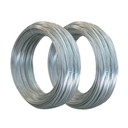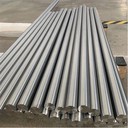Contact Us
- Xinwu District, Wuxi City, Jiangsu Province
- info@szdepu-metals.com
- +86 134 24179016
Stainless Steel Pipe
Why Choose Us stainless steel?
One stop solution
Our customer team is highly skilled, motivated and always ready. No matter if you are following up on an order, looking for advice or looking for a bespoke quotation, our team is here to help.
Custom service
With our manufacturing and design capability, it allows us to not only offer standard products, but also products based on customers’ own specific designs.
High quality
As evidence of this quality, we’ve been awarded third-party accreditations including ISO 9001-2015 and EN-1090-2. These independently verify our technical expertise and confirm that we meet standards set by respected regulatory bodies.
Design
Our design engineers have more than 25 years of experience designing and building molds that offer innovative solutions to complex design challenges.
What is a Stainless Steel Pipe?
A stainless steel pipe is a hollow, cylindrical tube made from a corrosion-resistant alloy of steel. It is used for conveying fluids or gases in various industries, including chemical processing, oil and gas, food processing, and medical equipment production. Stainless steel pipes typically have high strength, durability, and resistance to heat and abrasion, making them ideal for harsh environments and high-pressure applications.
 Stainless Steel Round Tube
Stainless Steel Round TubeStainless steel round tube offers a durable mill finish that can offer the right fit. Stainless
 Large Diameter Stainless Steel Pipe
Large Diameter Stainless Steel PipeDiameter Sizes: 1/8 to 36. Thickness: Sch 5S to Sch XXS. Length: random, customized. Type: seamless
 Duplex 2507 Pipe
Duplex 2507 PipeDiameter Sizes: 1/8 to 36. Thickness: Sch 5S to Sch XXS. Length: random, customized. Type: seamless
 Marine Stainless Steel Tubing
Marine Stainless Steel TubingDiameter Sizes: 1/8 to 36. Thickness: Sch 5S to Sch XXS. Length: random, customized. Type: seamless
 Sch 80 Stainless Steel Pipe
Sch 80 Stainless Steel PipeDiameter Sizes: 1/8 to 36. Thickness: Sch 5S to Sch XXS. Length: random, customized. Type: seamless
 Sch 10 Stainless Steel Pipe
Sch 10 Stainless Steel PipeDiameter Sizes: 1/8 to 36. Thickness: Sch 5S to Sch XXS. Length: random, customized. Type: seamless
 Thin Wall Stainless Steel Tube
Thin Wall Stainless Steel TubeDiameter Sizes: 1/8 to 36. Thickness: Sch 5S to Sch XXS. Length: random, customized. Type: seamless
 Stainless Steel Round Tube
Stainless Steel Round TubeDiameter Sizes: 1/8 to 36. Thickness: Sch 5S to Sch XXS. Length: random, customized. Type: seamless
 Astm A312 Seamless Pipe
Astm A312 Seamless PipeDiameter Sizes: 1/8 to 36. Thickness: Sch 5S to Sch XXS. Length: random, customized. Type: seamless
 Heavy Wall Stainless Steel Pipe
Heavy Wall Stainless Steel PipeDiameter Sizes: 1/8 to 36. Thickness: Sch 5S to Sch XXS. Length: random, customized. Type: seamless
 Stainless Steel Square Pipe
Stainless Steel Square PipeDiameter Sizes: 1/8 to 36. Thickness: Sch 5S to Sch XXS. Length: random, customized. Type: seamless
 Exhaust Pipe Stainless Steel
Exhaust Pipe Stainless SteelDiameter Sizes: 1/8 to 36. Thickness: Sch 5S to Sch XXS. Length: random, customized. Type: seamless
Benefits of Mirror Finish Stainless Steel pipe
Anti-stain and anti corrosion
Corrosion is the number one adversary of metal piping. The exterior of iron, steel and concrete pipework will deteriorate due to soil and UV rays. Other types of piping inside walls appear to rust, become damaged by abrasion, or accumulate debris. However, due to corrosion resistance of stainless steel, this happens rarely. This gives stainless steel an advantage in areas such as sanitary water distribution and hospital applications.
Cost effective
When you buy stainless steel 316 pipes, you’re getting a durable product that will last for decades. It is a long-lasting substance that is simple to maintain and install. Because of its corrosion-resistant qualities, stainless steel is low-maintenance and unlikely to need to be replaced for decades.
Versatility
Stainless steel can be treated with various elements such as molybdenum, nickel, or nitrogen to improve its corrosion resistance. Stainless steel can endure high temperatures. By adding various materials to stainless steel, thin pipe walls can be achieved, resulting in a lighter finished product that is suited for a wide range of commercial and industrial applications.
Hygiene
Stainless steel is a hygienic material that is easy to clean and maintain, making it ideal for use in food processing, medical, and pharmaceutical industries. It is also resistant to bacteria, mold, and other contaminants.
Environmentally friendly
Stainless steel is not a petroleum-based product. Unlike other pipe materials, it does not require any type of coating or lining. When you require disposing of or repairing stainless steel piping, it is 100% recyclable, reducing the environmental impact.
High heat resistance
While this might only be true for certain grades, it is possible to find stainless steel designed to last in extreme temperatures.For piping, this is vitally important. These pipes could be placed in an area of exceptionally high heat, or an area where they’re exposed to frigid temperatures.
Types of Stainless Steel Pipe
304 Stainless steel pipe
For tubing and piping applications, type 304 stainless steel is a common selection because it is highly chemical- and corrosion-resistant. However, type 304 stainless steel is not compatible with applications where temperatures fall between 800 and 1640 degrees Fahrenheit (F) because it is prone to carbide precipitation, a result of the material’s .08 percent carbon content limit. Stainless steel type 304L circumvents this problem because it has a lower carbon content limit, and therefore can be subjected to welding and higher temperature applications.
Stainless steel pressure pipe
This type of stainless steel pipe is made from either solid chromium or a chromium and nickel combination. Types of stainless steel pressure pipe include seamless and welded pipe, electric fusion welded pipe for high-pressure applications, large diameter welded pipe for corrosive or high-temperature applications, and seamless and welded ferritic and austenitic stainless steel pipe.
Stainless steel sanitary tubing
For applications where stainless steel tubing or piping must come into contact with food and other sensitive products, sanitation is a high priority. Stainless steel sanitary tubing is used in such applications because it has high corrosion-resistance, doesn’t tarnish, and is easy to keep clean. For specific applications, different tolerances can be achieved.
Stainless steel mechanical tubing
In applications such as cylinders, bearings, and other hollow formed parts, stainless steel mechanical tubing is typically used. Tubing can manipulated to have a variety of cross-sectional shapes, such as square and rectangular, in addition to the more traditional, round tubing cross-section.
Stainless steel aircraft tubing
In highly-specific aircraft applications, chromium and nickel type stainless steel is used because of their heat and corrosion-resistance. Found in applications that require high-strength, stainless steel aircraft tubing can be work-hardened or welded, although work-hardened pieces shouldn’t be used with some kinds of corrosive substances. Low-carbon types of stainless steel are a common choice for welded parts.
Aircraft hydraulic line tubing
Another type of aircraft tubing, aircraft hydraulic-line tubing is used in aerospace applications as fuel-injection lines and hydraulic systems, and tends to be small. It is often manufactured from types 304 or 304 L stainless steel because of the steel’s high-strength, corrosion-resistance, and ductility.
Material of Stainless Steel Pipe

Austenitic stainless steel
This is the most common type of stainless steel used for manufacturing pipes. It is a chromium-nickel stainless steel that can be easily welded, fabricated, and formed. It also offers good resistance to corrosion and heat.
Duplex stainless steel
This material has a higher strength and better corrosion resistance than austenitic stainless steel. It contains both chromium and nickel, along with other elements like molybdenum and nitrogen, making it ideal for highly corrosive environments.
Ferritic stainless steel
These stainless steel pipes are made from a material that contains high levels of chromium and low levels of carbon. This type of stainless steel has high resistance to corrosion and is commonly used in construction and industrial applications.
Martensitic stainless steel
Professional quality inspectors will conduct a quality inspection on each batch of products. Authoritative test reports are also available.
Precipitation-Hardening stainless steel
These stainless steel pipes are made from a material that contains chromium, nickel, and other elements. They are heat-treated to improve their strength and corrosion resistance.
Application of Stainless Steel Pipe
Oil and gas industry
Stainless steel seamless pipes are widely used in the oil and gas sector for conveying fluids, especially in harsh and corrosive environments. They are suitable for both upstream and downstream applications.
Chemical industry
Stainless steel pipes are employed in the chemical processing industry for transporting corrosive chemicals and fluids. Their resistance to chemical corrosion makes them a preferred choice.
Petrochemical industry
Petrochemical plants use stainless steel seamless pipes for various applications, including the transportation of petrochemical products, acids, and other corrosive substances.
Power generation
Stainless steel pipes are used in power plants for conveying steam, condensate, and other high-temperature fluids. Their corrosion resistance is crucial in power generation applications.
Food and beverage industry
Stainless steel seamless pipes are widely used in the food and beverage industry for conveying liquids and gases. Their hygienic properties, resistance to corrosion, and ease of cleaning make them suitable for this industry.
Automotive industry
Stainless steel pipes are used in automotive applications, including exhaust systems. Their corrosion resistance and ability to withstand high temperatures contribute to their durability in such applications.
Aerospace industry
Stainless steel pipes are employed in aircraft and aerospace applications due to their high strength-to-weight ratio, corrosion resistance, and reliability in extreme conditions.
Water and wastewater treatment
Stainless steel seamless pipes are used in water and wastewater treatment plants for conveying water, chemicals, and other fluids. Their corrosion resistance is essential in these environments.
Construction and architecture
Stainless steel pipes are used in construction for various purposes, including structural components, handrails, and architectural features. Their aesthetic appeal, durability, and corrosion resistance contribute to their popularity.
Pharmaceutical industry
Stainless steel seamless pipes are employed in the pharmaceutical industry for the transportation of fluids and chemicals. The high hygiene standards and corrosion resistance make them suitable for pharmaceutical applications.
Stainless Steel Pipe Craftsmanship
Cutting
The first step in the fabrication of any pipe is cutting the raw material to the desired length. Stainless steel pipes are cut with a saw or plasma cutter.
Forming and bending
After cutting, the pipe is formed and shaped into the desired shape. This is achieved by using specialized tools, such as rollers and benders, to create curves, angles, and intricate shapes.
Welding
Welding is the process of joining two or more pieces of metal to create a seamless structure. Stainless steel is welded using Tungsten Inert Gas (TIG) welding, which provides a high-quality weld that is aesthetically pleasing and durable.
Polishing
After welding, the pipe is polished to provide a smooth, shiny finish. Polishing helps to eliminate any scratches or blemishes on the surface of the pipe, creating a mirror-like appearance.
Testing
Finally, the pipe undergoes testing to ensure that it meets the required specifications. Testing includes pressure testing, ultrasonic testing, and visual inspection.
How to maintain Stainless Steel Pipe

1.Conduct regular inspections
2.Prevent metal to metal contact
3.Minimize pipe movement
4.Clean and polish pipes
5.Make minor repairs
6.Know your pipes’ life expectancy
What is the standard for stainless steel pipe?
(ANSI) standard
One of the most commonly used standards for stainless steel pipes is the American National Standards Institute (ANSI) standard. This standard covers the dimensions, tolerances, and materials for stainless steel pipes. It provides guidelines for the manufacturing process, ensuring that the pipes meet certain criteria for strength, corrosion resistance, and durability.
(ASTM) standard
Another widely recognized standard is the American Society for Testing and Materials (ASTM) standard. This standard specifies the requirements for both seamless and welded stainless steel pipes. It defines the chemical composition of the pipes, as well as the mechanical properties, such as tensile strength and yield strength. The ASTM standard also includes guidelines for testing methods, which are used to evaluate the quality and performance of the pipes.
(ISO) standard
In addition to these standards, there are also international standards, such as the International Organization for Standardization (ISO) standard. The ISO standard provides guidelines for the design, manufacturing, and testing of stainless steel pipes. It aims to ensure consistency and compatibility of these pipes across different countries and industries.
Step 1: High-quality welds. It involves the use of a non-consumable tungsten electrode to create an electric arc that melts the base metal and filler material, if necessary. A shielding gas, such as argon, is used to protect the weld area from atmospheric contamination.
Step 2: The TIG welding process for stainless steel pipe begins with proper preparation. The pipe ends need to be cleaned and beveled to provide a smooth and clean joint surface. This helps in achieving better fusion and improves the overall strength of the weld.
Step 3: Once the preparation is complete, the next step is to set up the welding equipment. The TIG welding machine needs to be set to the appropriate current and voltage settings. The electrode, typically made of pure tungsten or a tungsten alloy, needs to be sharpened and inserted into the torch.
Step 4: Before starting the actual welding, the welder needs to wear appropriate protective gear, including a welding helmet, gloves, and a protective jacket. Proper ventilation is also crucial to avoid exposure to harmful fumes and gases generated during the welding process.
Step 5: To begin welding, the torch is positioned at the joint of the stainless steel pipes, maintaining a specific angle and distance. The foot pedal or torch switch is used to control the arc and current flow. The welder needs to have a steady hand to guide the electrode along the joint, melting the base metal and introducing the filler material, if required.
Step 6: During the welding process, it is vital to ensure a stable arc is maintained and that the weld pool is protected with the shielding gas. The welder needs to move the torch in a controlled manner, ensuring even penetration and fusion along the joint.
Step 7: Once the welding is complete, the weld bead should exhibit a smooth and uniform appearance. It is essential to inspect the weld for any defects, such as cracks, voids, or insufficient fusion. Non-destructive testing methods, such as dye penetrant inspection or radiographic examination, can be performed to ensure the quality of the weld.
Our Factory
With a vast stock holding of stainless steel sheets, coils, strips, tubes, and bars, we have a wide range of products readily available to meet your immediate needs. Our comprehensive inventory ensures quick access to the materials you require.

Frequently Asked Questions Stainless Steel Pipe
As one of the leading stainless steel pipe manufacturers and suppliers in China, we warmly welcome you to buy or wholesale cheap stainless steel pipe in stock here from our factory. All customized products are with high quality and competitive price. For free sample, contact us now.





